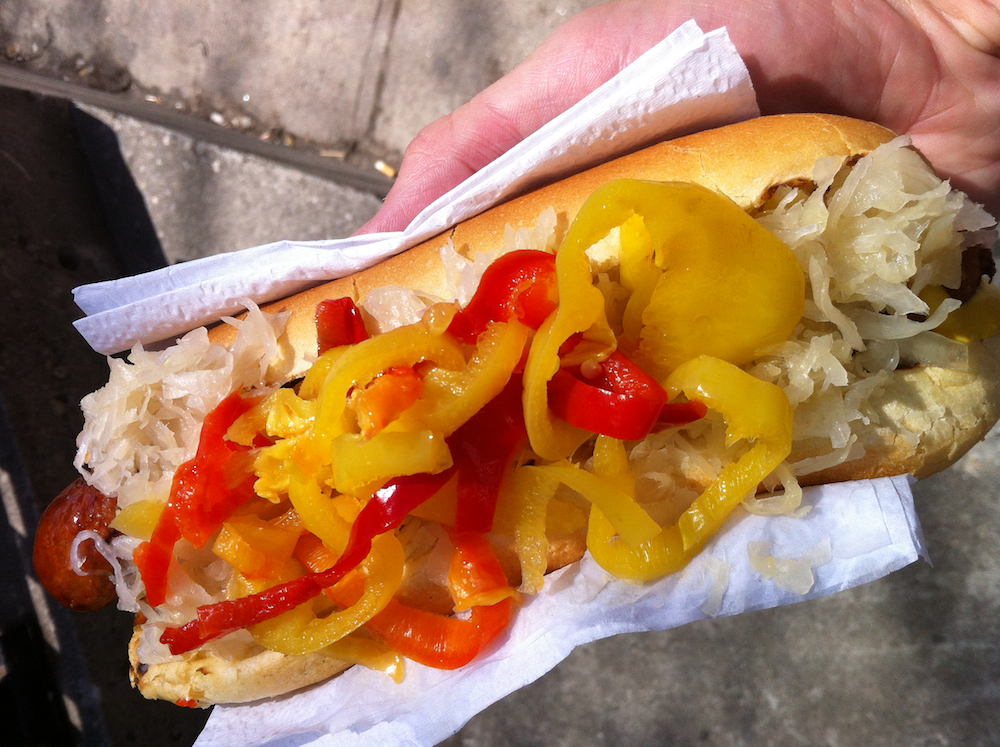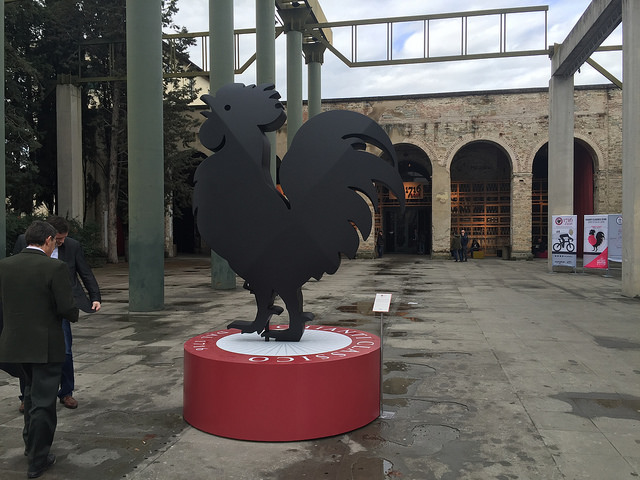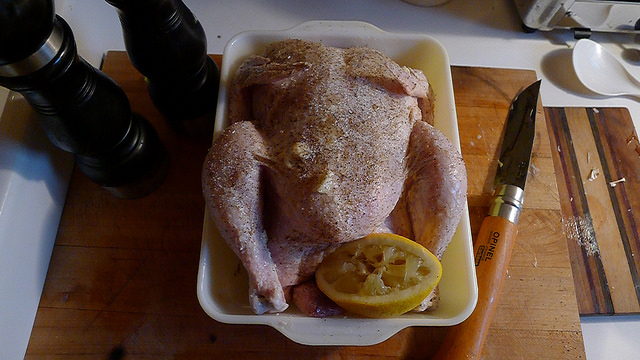More news this week on the Toronto food truck drama. As I have posted before, my sympathies lie with the food truck operators, like Zane Caplansky, who simply want to serve customers. Let them park on the street, like any other vehicle, and let the market sort out whether there ought to be 100 food trucks or none. If the population of Toronto decides never again to dine out sitting at a table under a roof, then so be it. Why our elected councillors have any say in the matter, especially after the food cart fiasco a decade or so ago, is beyond me. I guess it’s easier than arguing about where to build the subways we have no money for, or whatever else they pretend to do in City Hall.
One thing I would welcome, if our food trucks were to be granted their liberty, would be the cessation of articles, and snide asides in newspaper reports, complaining about Toronto’s lack of street food. The word ‘vibrant’ seems to be often used, wistfully, to describe what might happen to the ‘scene’ were the food trucks finally be allowed to roll. George Orwell famously wrote that to see in front of one’s nose needs a constant struggle, and I say those that complain about this city’s street food scene have long ago given up that struggle because, ‘vibrant’ or not, I am proud of, and love dearly, the great Toronto culinary tradition of street meat.
It must be just another manifestation of the Canadian inferiority complex that we denigrate the one of the few distinct foodways of our city. (The other is the peameal sandwich, which ought to be enshrined from the gold standard one at Carousel Bakery to the sublime sous-vide one at the bar at Langdon Hall.) I strongly suspect that those who sneer at our hotdog carts have never enjoyed the pleasures of a meat tube eaten curbside, hot off the grill. Or, perhaps, they do and doth protest too much to hide a kind of misplaced shame and self-loathing. If it’s the former, then for under $5 they’d do well to avail themselves at any one of the many conveniently situated carts around the city. If it’s the latter, then it’s time for them to come out, and time for us to create a loving and welcoming environment for hotdog lovers.
One way to reclaim this great Toronto culinary tradition is to remind ourselves of the deep and important cultural relevance of the Hogtown dog. Here are five ways eating street meat is culturally edifying:
- Street meat celebrates our Italian heritage
The correct order at a hotdog cart is not a hotdog, or its vegetarian derivative. The correct order is for an Italian sausage, preferably spicy. Aside from general issues of deliciousness and texture, the Italian sausage is made with pork, the meat with which Hogtown is most closely associated. Add to that the fact that Toronto’s Italian-born citizenry and their descendants number in the hundreds of thousands, then see how our hotdog carts express the great cultural contribution Italian-Canadians have made to our city, especially when you (and you should) add pickled hot peppers to your street meat. - Street meat celebrates our Germanic heritage
Since roughly August of 1914 the role of German immigrants in building our part of Canada has been downplayed, to say the least. And yet, as Edna Staebler showed us, so much of our homegrown gastronomy is derived from Teutonic cultures. The term ‘hotdog’ itself is a kind of ethnic slur against Germans, suggesting the frankfurters and wieners sold from 19th Century street carts might have been made from stray animals. While the hotdog itself, as well as the idea of selling them on the street, are innately German, it’s in the Toronto street meat’s essential condiment, Sauerkraut, that this culinary tradition expresses itself fully. The sour twang of acid in the kraut is the perfect foil for the hot fatty meat. - Street meat celebrates our Jewish Heritage
A Shopsy’s all beef hotdog may well be substituted for Italian sausage, for those who keep Kosher. For the rest of us, both the yellow challah bun and slices of dill pickle we add to our street meat remind us of the importance the Jewish community has had in building modern Toronto. - Street meat celebrates our close ties to the United States
The only appropriate spread condiment for Toronto street meat is French’s ‘Ballpark’ Mustard. Made yellow by turmeric (not as some mistakenly think food colouring), French’s headquarters and main factory was right across the lake in Rochester, New York. While it is sadly now made in New Jersey, French’s still, I think, may be counted as ‘regional food’ in Toronto, especially on clear days when you can see the old Kodak smokestack across the lake from the east side of the city. - Street meat celebrates our Scottish heritage
A spicy Italian sausage and pop or water is still less than $5.
Of course these reasons only reflect the significance of the traditional hotdog art offerings. If a vendor started offering as a condiment kim chi, for instance, then the foodway could naturally evolve to reflect still more cultural communities. And, if all that weren’t enough, I’ll further posit that Toronto street meat is more or less good for you. As long as you avoid those bacon bit things, a single sausage on a bun is a pretty reasonable serving size and won’t tip the calorie counter too far north. Michael Pollan writes, in Cooked, that fermented foods may have nutritional quality that render them superior to their fresh embodiments, so load on the sauerkraut, pickles and hot peppers. At least we can be sure that our street meat hasn’t been fried in transfats, and at curbside what you see is what you get, there are no dirty tricks to be made behind the kitchen doors.
Don’t let the hotdog haters win. Join me in my struggle to elevate the great Toronto street meat tradition. Go have a hotdog for lunch soon, before the weather gets cold again.
 Malcolm Jolley is a founding editor of Good Food Revolution and Executive Director of Good Food Media, the company that publishes it. Follow him at twitter.com/malcolmjolley
Malcolm Jolley is a founding editor of Good Food Revolution and Executive Director of Good Food Media, the company that publishes it. Follow him at twitter.com/malcolmjolley









The street dogs are mostly pretty mediocre here in Hogtown. How about a real chili dog made with homemade, beanless Texas Red? Or a Coney Dog with the real deal Michigan sauce? Or steaming the buns…which should be potato buns which you can’t find here. And don’t get me started as to what passes for B.B.Q. in this city. I just returned from a blue-highway road trip through Mississippi and the Gulf states and there is no comparison.